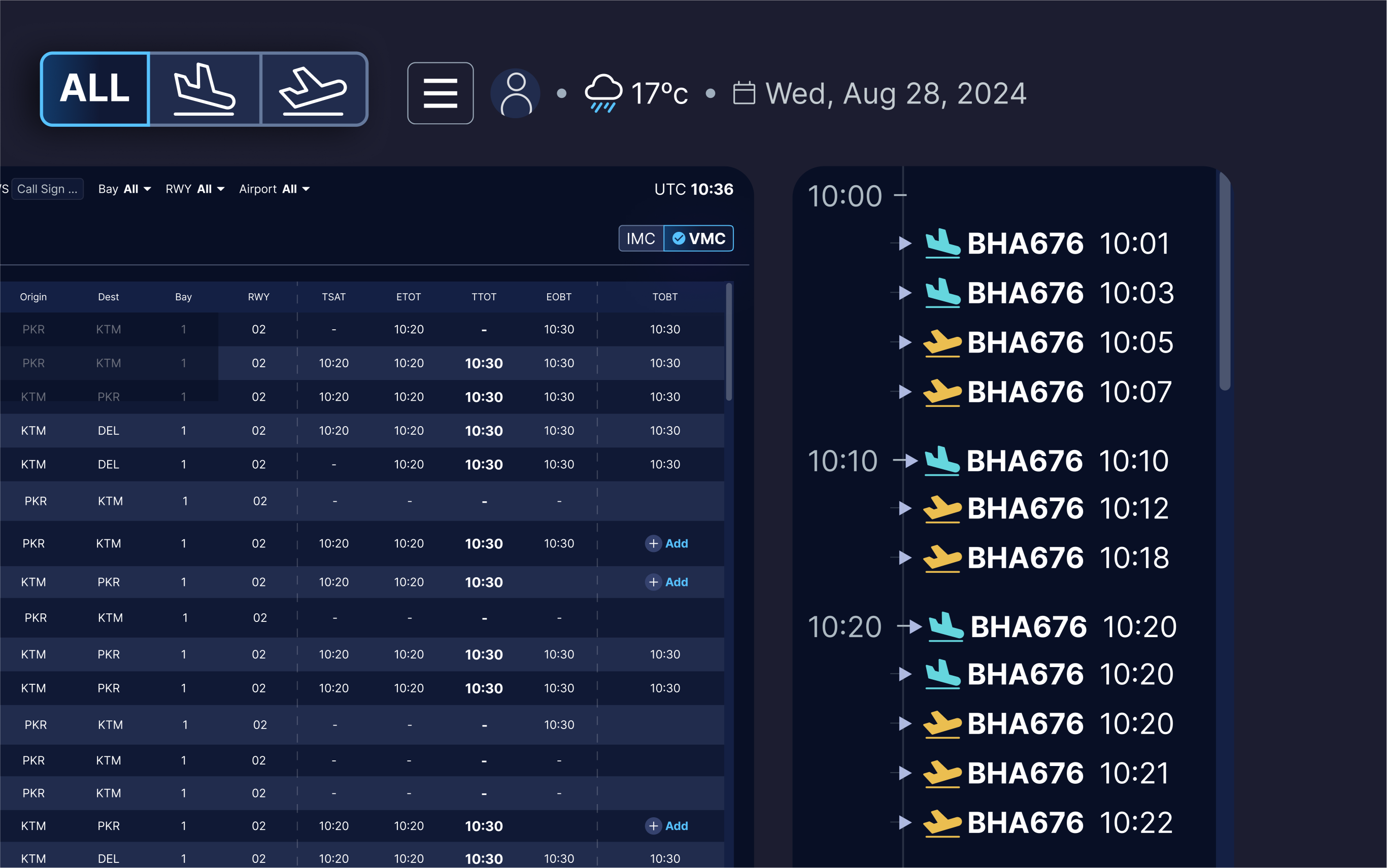Optimizing Air Traffic at TIA: Nepal’s First ATFM/A-CDM System

Tribhuvan International Airport (TIA) has been struggling with several operational challenges, including flight management, schedule predictability, and minimizing delays. The efficient use of airspace, particularly during peak hours, remains a concern, as does effective coordination among key stakeholders such as Air Traffic Control (ATC), airlines, and other agencies to ensure situational awareness and informed decision-making. These flight delays not only increase fuel consumption and operating costs but also contribute to greater environmental impact.
To address these challenges, we studied existing ATFM/A-CDM systems implemented at other airports and identified the key pain points of TIA stakeholders. Based on these insights, we designed and developed a real-time system integrated with the Aeronautical Message Handling System (AMHS) to receive flight messages and generate calculated flight timings along with weather forecasts. The platform enables stakeholders to collaborate more effectively and manage airport operations with greater efficiency. Additionally, to minimize airborne delays, the system incorporates a Ground Delay Program (GDP) tailored for regional airports across Nepal.




